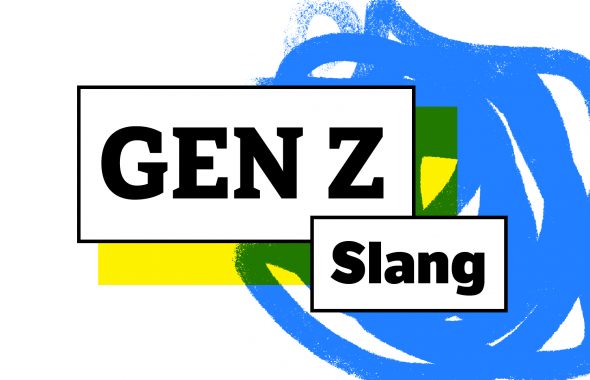By Mariel Jungkunz, Research Editor at Dictionary.com
The long-awaited movie version of In the Heights—based on the hit Broadway musical—is in theaters and streaming. Everyone’s talking about it, and you’ve got questions.
You might be wondering if you need to speak Spanish to understand its lyrics and many cultural references—and if so, you’ve come to the right place. Dictionary.com is collaborating with Lexico.com, an online Spanish dictionary and translator, to share the meaning of a few need-to-know In the Heights terms and also delve into where the words come from. (You’ll be surprised!)
Knowledge of Spanish is not required to enjoy the movie or the musical, but having a deeper understanding of the sprinkling of Spanish words throughout will only add to your appreciation of the references that are particularly familiar to Cubans, Dominicans, and Puerto Ricans. (It’s important to note that not everyone is a fan of In the Heights. See our note below about criticism of the film related to colorism.)
First things first: In the Heights celebrates Caribbean cultures (Cuban, Dominican, and Puerto Rican) through the very music that originated in these islands and the New York City communities where many of their people settled. The musical, which has toured around the world, has won four Tony Awards (including for Best Musical) and logged more than 1,000 Broadway performances since its premiere in 2008.
What is Washington Heights?
In the Heights tells the interwoven stories of several characters who all live in the real-life Washington Heights borough of Upper Manhattan, where many Cuban, Puerto Rican, and Dominican families have settled since the 1950s.
New York City is integral to the migration story of many islanders—who, by the 1970s, had become the majority of residents in Washington Heights. Today, the city is home to more than 700,000 Puerto Ricans and 1 million Dominicans. These are by far the biggest concentrations of these populations outside of the islands themselves. Approximately 70,000 Cubans live in the same area (and they’ve settled in Florida in greater numbers).
Interestingly, Washington Heights is not directly named after the first president, but after Fort Washington, which was built on a high point and protected the island of Manhattan during the American Revolutionary War.
In the Heights Spanish vocabulary
We’ve put together a brief list of essential words and phrases to get you ready to watch the film. While you don’t need to understand Spanish to enjoy the film or musical, learning the following terms will surely take your viewing experience to new, well, heights.
piragüa
Might as well start with a fun one. A piragüa is a snow cone. In Puerto Rico, though, the ice isn’t served as a dome. It has a point, making it look like a pyramid at the top. The word piragüa comes from the word for “boat” in Taíno, an Arawakan language. The word Taíno also refers to the people who speak this language and who once made up the majority of the populations of Cuba, Dominican Republic (and all of Hispaniola), Puerto Rico, Jamaica, and the Bahamas. In the movie, the piragüero (who sells piragüas) has a rivalry with Mister Softee (who needs no introduction).
Usnavi
According to the show’s lyrics (and Caribbean lore), the main character’s name Usnavi is a wordplay based on the words “US Navy.” This name has plenty of real-life counterparts in the islands—as well as some literary connections. The 1974 novel Usmaíl, by Puerto Rican author Pedro Juan Soto, tells about life on the Puerto Rican island of Vieques from the point of view of islanders. Its titular character, Usmaíl, was named after the “US Mail.”
¡Fo!
This one’s an interjection you might miss unless you’re listening closely. In his opening monologue, Usnavi reacts to the smell of rotten milk with an emphatic “¡Fo!” This word immediately signals to Spanish-speaking audiences that there’ll be Spanish surprises throughout the musical—basically saying, “We’re not in Kansas any more!” ¡Fo! is short for fuchi and fuchila, both of which can be used to express disgust, especially at a smell or taste. (*Technically, Caribeños in Kansas do use the expression too.)
Abuela
If you’ve got even a passing, cursory knowledge of Caribbean culture, then you know Abuelas reign supreme. Do not mess with Abuela! Abuela, the Spanish word for grandmother, comes from the Latin avus, meaning “ancestor, old man, grandfather.” Abuela Claudia is the matriarch of her block and one of the leading characters in In the Heights. Her character hails from La Víbora (“The Snake”), an area of Havana, Cuba, so listen up for references to this place in her song, “Paciencia y Fe” (translation: “Patience and Faith”).
¡No me diga!
This phrase translates as “no,” “no way,” “you’re kidding me”—or any such variation—and it’s the name of a salsa-infused, gossipy number near the opening of In the Heights. You could say the closest translation is “You don’t say!” since the phrase literally means “Don’t tell me.” Diga is an imperative form of the Spanish verb decir (“to say”) and can also be used on its own to answer a phone or as a one-word response when someone calls your name: “¡Diga!” (as if to say, “Go on, tell me”). The verb decir is ultimately derived from the Latin word dictio (“word”), which makes it related to dictionary. (“¡No me diga!” dice Dictionary.com.)
¡Wepa! We have other Spanish expressions for you to learn and add to your daily conversations.
le-lo-lai
Another Easter egg for savvy audiences. The lyrics “lai-le-lo-lai” appear in the song “Carnaval del Barrio.” In the Heights features a book by Quiara Alegría Hudes, a Jewish and Puerto Rican playwright, and music and lyrics by Lin-Manuel Miranda, the Puerto Rican composer behind Hamilton. No doubt, Miranda inserted “lai-le-lo-lai” in the lyrics as a nod to traditional Puerto Rican music. Over time, this multipurpose refrain has found use as a song title, the name of a type of Christmas music, and as a scat in many songs. Some musicians believe its origins trace back to North Africa as a song of praise combining the greeting olé and the name Allah, but the link between these terms is a controversial one that not all Spanish lexicographers support.
pana
You might call your friend a pana, as the song “Piragüa” does. Pana is used in parts of South America—specifically in Venezuela—as well as in Cuba, Puerto Rico, and the Dominican Republic. Some say the word is related to the Spanish word for bakery, panadería, because friends meet—where else?—in coffee shops and bakeries to chat. But there’s not a lot of evidence to indicate this is so. Another theory claims it is based on a mispronunciation of the English word partner, which has a similar meaning to the word pana.
Finally, we’ve come to the biggies:
merengue, salsa, bachata
Where would we be without the musical styles that inspired In the Heights? (Shudder. We can’t even imagine.) Ask any Caribbean from these islands, and they’ll probably confirm that island music has been playing in the background throughout their lives in one way or another (from Abuela’s old records or radio shows, to family dance parties, to today’s hit songs). There are many musical styles originating in Cuba, the Dominican Republic, and Puerto Rico, including merengue, bachata, and salsa.
The history of music in the Caribbean is a complicated one, of course, with a lot of cross-collaboration between Cubans, Dominicans, and Puerto Ricans, so here we’ll focus briefly on word origins.
- The word merengue as a type of dance was first recorded in Spanish in Puerto Rico and the Dominican Republic in the 1840s. Its name (and the musical style) shares a connection to Krio maringa, the Jamaican Creole merengue, and Haitian Creole mereng. Merengue first developed in the Dominican Republic. Click here to view a merengue performance (Smithsonian Folkways).
- The term bachata first appeared in the Dominican Republic and Cuba to refer to a type of party, not to a specific type of music (which also hails back to the Dominican Republic). Here’s a short UNESCO documentary about the origins of merengue (in Spanish with subtitles).
- Salsa (which means “sauce” in Spanish) is derived from the Latin salsus, or “salty.” This music originated in New York City in the 1940s. Watch a performance by Hector Lavoe, considered one of the greatest salsa singers (Fania Records).
Other words to know
If the words above have your linguistic curiosity dancing, check out the following list for more terms to know to fully immerse yourself in the language and culture of In the Heights.
- alabanza
- apagón
- atención
- barrio
- café
- caliente
- calor
- carnaval
- fe
- leche
- tontería
- paciencia
- pan
- respira
Note: While In the Heights has been praised for its strides in terms of representation of Cuban, Dominican, and Puerto Rican cultures in the mainstream, some viewers have criticized the new film for what’s known as colorism. Colorism is the practice of favoritism toward those with a lighter skin tone and mistreatment or exclusion of those with a darker skin tone (including among those who are people of color themselves). Namely, some have criticized the film for not having a fuller cast of Black Latinx characters and not accurately portraying the diversity of the Washington Heights community.
Mariel Jungkunz is a Puerto Rican writer, journalist, and an editor at Dictionary.com and Lexico.com. She spent her childhood in Río Piedras, Puerto Rico, and thinks everyone needs some pastelillos and the Puerto Rican tradition of parrandas in their lives.












